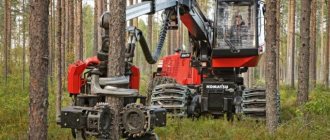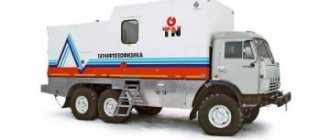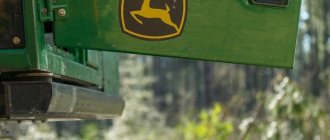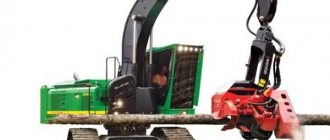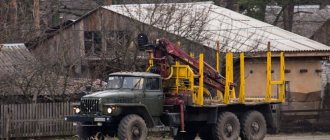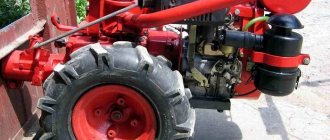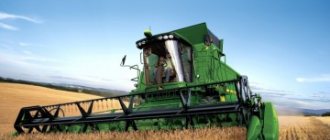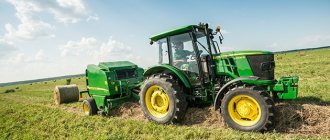To carry out logging work, the use of so-called harvesters is becoming increasingly popular. These logging units are multi-purpose harvesters that allow for continuous and selective felling of trees in a cutting area, trimming branches and logging sawn material. If we look at harvesters externally, they have the greatest similarity with switch excavators, but at the end of the boom of these harvesters there is a special multi-purpose head, with the help of which a wide range of work with timber is performed.
What functions do they have?
John Deere harvesters incorporate the latest technical advances with traditional quality and an increased desire to automate all processes.
The company's technologists pay special attention to the introduction of innovation, which allows the equipment of this manufacturer to keep up with the times.
Used for felling, bucking, delimbing, and assorting trunks for further transportation, harvesters of the mentioned brand are characterized by increased maneuverability, cross-country ability, high efficiency with minimized fuel costs.
These machines are used both in forest plots and in road construction, performing well on soft soils, marshy soils and on smooth asphalt surfaces.
The manufacturer produces harvesters designed to perform the following actions:
- thinning and harvesting of small branches;
- clear felling of thin-trunked and larger trees;
- felling of forests of extreme difficulty.
The most in demand is technology focused on performing the processes indicated in the last two paragraphs.
The technical characteristics of the KamAZ-65116-n3, equipped with a Cummins 6 ISB 300 engine, are reviewed for you. And here you will learn the history of the creation of the KrAZ-250 vehicle.
What is Harvester?
The harvester is a unique machine that represents the main part of a modern logging complex.
The equipment is unique in that it replaces a practical team of workers, works 5 times more efficiently and has increased maneuverability. The peculiarity of the system’s operation lies in the design of the hydrostatic drive: two pumps are installed next to the engine, one of which works for attachments, and the second for travel.
Well, the most important thing is the unique articulated frame design. Like a skateboard, it breaks not just in half, but also in planes, which gives the Harvester amazing maneuverability - it absolutely doesn’t care about swamps, mud, snow, or uneven ground.
Well, the main mechanism of the harvester is the harvester head, which the harvester operator controls using a computer from the cabin, driving it with a hydraulic system.
Harvester at logging site in the photo
When you look at the work of a harvester, you get the feeling of a science fiction film, but nevertheless, this is absolute reality, and the principles of operation of the logging complex, at first glance, are quite simple. The harvester clasps the trunk with huge knives, the saw bars cut the tree almost to the root, and then the trunk is pulled out with long rollers and cleared of knots and bark, and then the same saw bars cut off parts of the trunk of the size specified by the operator. Actually, everything is simple, if you do not take into account the complexity of control and the complexity of the operation of all this equipment.
History of the creation of the harvester
It is no secret that in ancient times there were such professions as woodcutter and lumberjack. And then their names really corresponded to the work performed, and only an ax and a saw were used as tools for logging - the most primitive work. However, even under such logging conditions, Russia has always been a leader among world suppliers of wood and at the same time fully satisfied its needs for it. But felling trees, clearing the trunk of knots and removing the tree from the clearing - all this was done manually.
However, as the years passed, technological progress developed, and the first devices began to appear designed to make the lumberjack’s work easier. At the beginning of the last century, the first tractors appeared, and then a real miracle of progress - a chainsaw. These inventions increased labor productivity in logging, but overall the work remained dangerous and difficult.
Back in 1984, the Karelian Research Institute of the Forestry Industry created the first set of machines for cut-to-length logging in the Soviet Union at that time. True, at that time the now popular names for these machines were not yet used.
The Harvester forestry harvester also did not appear immediately. It was the fruit of the evolution of the delimbing machine, which first acquired the function of bucking and cutting the log, and a few years later was combined with a felling machine. The first harvester processed the tree in two stages. First, the tree was rolled up and cut with a felling head, and then a delimbing device—the processor—was placed on it.
Predecessor of the domestically produced harvester
Moreover, then the Forest Harvester required two operators: the first to control the machine and the second operator to control the processor. And then, in order to reduce the work cycle and labor costs, a single system was invented almost 40 years ago - the harvester head. It combines a gripping mechanism, a shearing machine for felling and bucking wood, a branch processing mechanism that pulls rollers and delimbing knives, and a length measuring device.
Harvester control
The harvester cabin is perfectly clean—it’s customary for operators to take off their shoes before entering the cabin, because there is impenetrable dirt around. You are supposed to wear socks here.
The harvester's cabin is somewhat reminiscent of a mission control center: right in front of the operator there is a monitor of a conventional computer, which is integrated into the cabin, and the usual keyboard extends out. There is even a touchscreen here, and you can safely imagine that you are working on a laptop.
A special program is loaded into the computer, which is configured using several hundred parameters. In the program you can set almost all parameters from the type of wood to the volume of timber and its cost. If suddenly the machine determines that a tree costs less than what is specified in the program, it simply stops sawing it.
The harvester operator controls the system using joysticks that are at hand. Moreover, the steering wheel in our usual understanding is replaced by a small joystick, and two more joysticks, almost completely articulated, control the harvester boom and head.
Harvester cabin in the photo
If in words everything looks very simple, then in order to master the technique, it will take several months, or even years.
Harvester operators study in special courses, which, together with theory and practice, take more than one year. Although our operators master the most complex controls and machine in a few weeks, well, a maximum of a month, and then on the plot they simply improve their skills in practice.
Let's move on to safety precautions. The windshield is protected by a special grille, but even this is unlikely to save you if the operator makes a mistake and a barrel several tens of meters long and half a meter thick falls onto the cabin. Therefore, the cabin is reinforced with special pipes that protect against falling trunks.
How does a harvester work?
From the outside, the work of a harvester resembles the work of a robot. The articulated harvester head seems to live its own life and finds the tree itself, fells it itself, and then itself rids it of branches, spitting out multi-meter logs. But this is the skill of the operator, who every second has to operate two joysticks simultaneously, controlling the movement of the mounted mechanism, the movement of the boom and the trajectory of the trees falling every minute.
The harvester does all the work itself, and after it only logs remain at the logging site, prepared for removal from the logging zone. The average productivity of the harvester is 10 cubic meters of wood per hour. But since the operator’s salary depends entirely on output, during an eight-hour shift one person manages to cut down almost three times as much, which is 250 cubic meters of wood.
The uniqueness of harvesters lies in the fact that this technique can do whatever it wants with the forest - cut six-meter trunks or thin, almost jewel-like wooden disks. True, it all depends on the skill of the operator.
What is this smart machine? This self-propelled machine is designed to perform basic logging work. This equipment can be installed on both tracked and wheeled bases. Some harvester models are equipped with a half-track chassis.
Track-based harvesters are used in wetlands and in areas with unstable, loose soil. Such vehicles have excellent maneuverability and can be used in the most remote forest areas.
As we said earlier, the main working element of the harvester is the harvester head, which is a welded metal frame into which the gripping arms are installed. Using these levers, hydraulic cylinders are controlled, which have hydraulic motors at the ends, on the output shafts of which the wood is grabbed and cut.
Harvester design diagram
Depending on the cross-sectional diameter of the trunk, different felling methods are used: for thin and medium-sized trees, one cut is made, and for the thickest trunks, cutting is used in several steps. After felling the tree, the trunk is moved forward using a dragging device and cleared of branches. For this purpose, lopping scissors are used. Then the Harvester crosscuts and stacks the sawn parts of the trunk.
Manufactured harvester models are divided into classes depending on the diameter of the processed trunk and the weight of the machine: light up to 600 kg, medium up to a ton and heavy up to 1300 kg. Light harvesters are used for thinning, the second for universal cutting, the latter - just for logging.
There are also more powerful models on the market weighing up to 3.5 tons, which are capable of processing trunks more than a meter thick. Such a head costs almost a quarter of a million dollars.
Video “Various Harvester Models”
Technical characteristics based on the example of the 1270 series
Launched in 1996 by the John Deer brand, the 1270 series of harvesters, produced for clear cutting, immediately gained worldwide recognition.
The technical solutions embodied in the models of this line were so successful that machines with article number 1270 still exist today, continuing to be constantly updated and improved.
Each of the modifications of the series represented a real revolutionary breakthrough in the development of technology in the category under consideration.
Harvesters of the 1270 series are divided into groups of machines of versions D and E. Forest harvesting units of this line have common features common to all versions and consist in the following parameters:
- six-wheel base;
- powerful 6-cylinder engine;
- rotating cabin;
- intelligent navigation system for controlling the sawing process and diagnosing the functioning of the main mechanisms and components.
In general, the technical characteristics of John Deere harvesters have only minor differences, and you can verify this by conducting a comparative analysis of some models of this manufacturer.
Also, such a consideration will help to delve in more detail into the root causes of the constructive perfection of the brand being described.
Version "E"
Harvesters of the 1270 E modification, launched into mass production in 2008, are machines that are significantly superior to the analogues of the previous D-series in terms of productivity, maneuverability and reliability.
Now felling large trunks and thinning old forests has become even more efficient.
Coinciding in the main structural units and elements with the previous technology, the new version of the equipment has a number of improved specifications, which can be presented in the following list:
- increase in engine power of the Tier IV standard to 170 kW;
- increase in torque , already reaching 1,125 Nm at 1,200-1,400 rpm;
- improvement of traction force indicators to parameters of 175 kNm;
- installation of a new CH7 manipulator with a 15% increased turning moment and 11% increased lift, a boom rotation angle of 220°, and a maximum extension of 8.6, 10 and 11.7 m;
- strengthening the supporting frames and, as a result, increasing the mobility of the cabin and improving the maneuverability of the entire machine as a whole.
The TimberMatic H-09 measurement and control system, which is equipped with all harvesters in the updated series, makes control even more convenient and simple.
Options for quick access to dialog boxes have been optimized, and a control function based on operating pressure indicators has appeared. The TimberLink™ program continues to distinguish these harvesters from a whole range of similar equipment.
Never before has it been so easy to monitor all operating processes occurring in equipment, detect defects and eliminate them. In addition to these options, TimberLink™ trains qualified operators to operate this equipment.
Forwarder
When the harvester has finished work, this does not mean that the entire logging process is completed. It is still necessary to collect and transport assortments, but the harvester can no longer do this.
For such work, another unique machine is used, which is called the Forwarder. Forwarder is translated from English as “carrier”, “forwarder”.
Forwarder transporting timber in the photo
The forwarder is also designed for logging work. Its functions include the work of sorting, collecting and removing logs from the place where the timber is felled. Working in tandem, the forwarder and harvester take forestry operations to a whole new level of efficiency.
How does a forwarder work?
As for the design of forwarders, the design is almost the same for all models. The operator's cabin and engine are located on the front half-frame, and the loading platform along with the racks is located on the rear half-frame. The main equipment of the machine is a manipulator-grabber, which is almost always located in front of the loading platform on the rear semi-frame. There are models on which the manipulator with a gripper is placed in front. This was done in order to increase the size of the cargo compartment.
The rotating mechanism is implemented using one or two cylinders, which change the angle of orientation along the corners horizontally, and the folding angle of the semi-frames varies from 40 to 60%. Vertically, the half-frames are tilted relative to each other by 15% using a universal joint. Thus, while the forwarder is moving over rough terrain, this rotating mechanism helps to achieve ultra-high cross-country ability despite the impressive length of the longitudinal base of this vehicle.
The stability of the forwarder during loading and unloading operations is ensured by locking the horizontal hinge. As for the chassis, almost all forwarders are equipped with a 6 or 8 wheel system equipped with all-wheel drive. Most tires are up to 60 cm wide - this is necessary to reduce vehicle pressure on the ground. It happens that modified models of tires with a width of 50 to 80 cm are also produced, depending on future use. To ensure minimal pressure on the ground, machines can be “shoeed” with chains or tracks.
Almost all forwarder models are equipped with a chassis with an articulated frame. Thus, the rotation of the machine occurs due to the fact that the position of the semi-frames synchronously changes relative to the hinged vertical axis. All forwarders are equipped with a hydromechanical or hydrostatic transmission, which can have two speed ranges. This feature allows the machine to move smoothly with high traction force. The speed in the first range is 7-10 km/h, and in the second the forwarder can be accelerated to 35 km/h.
As for the engine, 4- and 6-cylinder diesel engines with turbocharging with a capacity of 130 to 280 horsepower are used. The machines use continuously variable adjustment and transmission of torque through a mechanical-hydrostatic transmission, which makes it possible to realize a traction force of 22 tons and gently adapt to emerging obstacles in the cutting area.
Forwarder loading wood in the photo
The forwarder's drive axles have planetary gearboxes, a differential locking function and hydraulic multi-disc brakes. As a rule, the equipment is equipped with combined manipulators with a telescopic handle, gripper and rotator. The manipulator is driven by electro-hydraulic control by two levers located on the seat armrests.
It is important to know that the performance level of a forwarder depends on many factors. Typically paired with a harvester, the forwarder's productivity is about 12 cubic meters per hour. And here the apparent simplicity of the operation of this machine is completely subordinated to the skill of the person operating it.
By the way, both in Europe and Russia, the most widespread is the Scandinavian logging technology, developed in Sweden and Finland. It involves assorted timber harvesting and involves the use of powerful equipment - namely harvesters and forwarders.
Just one complex, consisting of a harvester and a forwarder, can replace up to 80 people working in logging using traditional technology. At the same time, the volumes of processed wood are incommensurate with manual labor. With traditional logging, a team of 7-8 people harvests 7-8 thousand cubic meters of timber per year, and the use of a harvester + forwarder combination makes it possible to harvest up to 60 thousand cubic meters or more. Productivity per person increases almost 8 times.
Harvester and forwarder - working together
Another interesting fact: it turns out that the cost of harvested timber changes several times a year depending on the season. The cheapest timber is traditionally harvested in winter. The most expensive timber is cut in the off-season, when the approaches to the plot are flooded with rain, and the mud turns logging into almost a military operation.
By the way, today more than half of all industrial logging in the world is done manually. Less than half are done mechanically. At the same time, two methods are used in mechanized logging: the tree-length harvesting technology (in 60 percent of cases) and the assortment technology (described above) - about 40%. The leadership in the use of modern technology for a complex of forestry machines is held by the Scandinavian countries, but currently this technology is being actively implemented in Russia and the CIS countries, and even in South America.
The vast majority of forestry machines are manipulative. In this way, it is possible to protect a person from contact with heavy trees, canes and assortment.
Manipulators installed on forwarders have more modest parameters: the reach is only up to 10 meters. Instead of a harvester head, they are equipped with a clamshell grab for lifting and loading assortments. The cargo compartment of forwarders is separated from the cabin by a lattice front wall.
The control system of such a machine makes it possible to record the harvested wood by volume and assortment, and so that at the end of the shift it will not be difficult for the operator to display a detailed report on the work, and individual specialists can even send it to the office by e-mail without leaving the machine cabin. .
Today, numerous levers, toggle switches and knobs of analog indicators are already consigned to history. They were replaced by convenient multifunctional joysticks with a mini-set of hot keys and a color touch screen. Recently, rotating cabins with roll leveling systems have been widely used, which are especially effective when working on slopes and slopes. The cabin can be installed either on a rotating device together with a manipulator, or separately. In the half-way case, it rotates synchronously behind the manipulator.
Harvester and forwarder operators
Forestry machine operators must be trained first on a simulator and then on a real machine.
Fun fact: Forestry equipment operators lead reclusive lives. What can be seen on the plot will inevitably force anyone to respect this, by the way, well-paid profession. In the forest, tens of kilometers from the nearest civilization, there is a comfortable trailer, even equipped with a satellite antenna, where loggers stand watch. They work in pairs in 8-hour shifts around the clock. A team of 8 people changes every ten days, or even every half month. So who after this will say that psychological compatibility is important only for astronauts.
